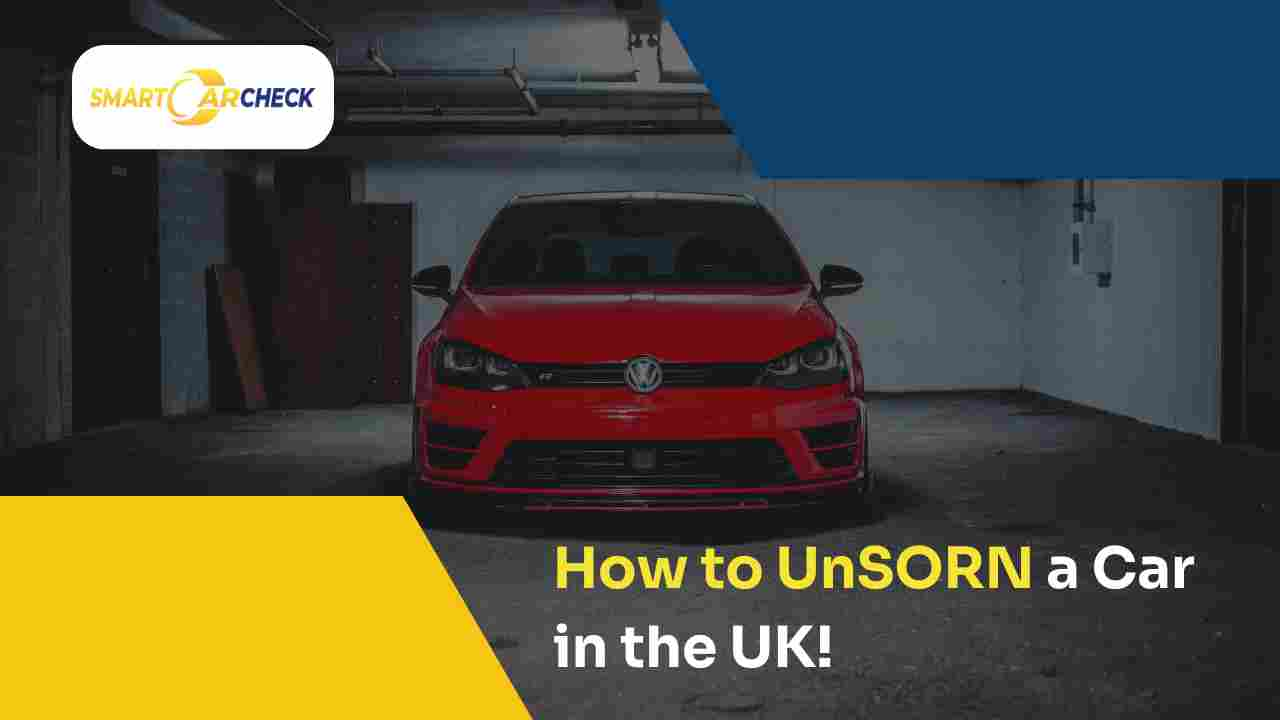If your car has been off the road for a while, you may have registered it as SORN, which stands for Statutory Off-Road Notification. This tells the DVLA that your vehicle is not being driven or parked on a public road, and that it doesn’t need to be taxed or insured for now.
But when you’re ready to start driving again, you’ll need to unSORN your car. This means taxing it again so you can legally use it on the road. Once you decide to bring your car back on the road, here’s everything you need to know about how to unSORN a car safely, quickly, and legally.
You can use an online car tax check tool to show if a vehicle is SORN for free. Enter the vehicle registration number to see full SORN details, road tax, MOT history, including advisory details and annotation items
————————–
KEY TAKEAWAYS
- Taxing your vehicle automatically ends its SORN.
- You can drive again once it’s taxed, insured, and has a valid MOT.
- Getting your car road-legal keeps you and others safe.
————————–
What Does it Mean to SORN and UnSORN a Car?
When you SORN your car, you’re officially telling the DVLA (Driver and Vehicle Licensing Agency) that you’re taking it off the road. This means you won’t drive it or park it on public roads, and you don’t have to pay road tax during that time.
Many people SORN their car if they’re storing it, fixing it, or not using it for a while. The vehicle must be kept on private property, such as a driveway, garage, or private parking area.
When you’re ready to drive again, you’ll need to unSORN it. You can’t directly “cancel” a SORN, but the way to end it is by taxing your car again. Once your vehicle is taxed, the SORN ends automatically.
Why SORN Your Vehicle?
There are several good reasons to SORN a car and here are the various reasons:
You’re not using it right now
Maybe it’s being repaired, stored, or waiting for parts.
You want to save money
A SORN car doesn’t need to be taxed or insured.
You have more than one vehicle
You can decide to only use one during certain seasons.
You’re restoring a classic car
Keeping it off the road avoids unnecessary costs until it’s ready.
It’s important to remember: once a car is SORNed, you cannot drive or park it on public roads. Doing so can lead to fines, clamping, or even prosecution. SORN helps you stay within the law while saving money when your car isn’t in use.
How Do You UnSORN a Car?
You can unSORN your car by simply taxing it again through the DVLA website. The process is quick and easy, and most people can get it done in just a few minutes.
Here’s how to do it online:
- Go to the DVLA vehicle tax page online.
- Click “Start now” to go to the page where you can tax your vehicle.
- Enter your vehicle details to tax your car. You can use either of these two information. The 16-digit number on your V11 tax reminder letter, or the 11 digit number from your V5C logbook (if you don’t have the reminder).
- Pay your vehicle tax by choosing how you’d like to pay. You can pay annually, every six months, or monthly by Direct Debit.
- Once payment is complete, the system will confirm your car is now taxed.
As soon as your vehicle is taxed, your SORN ends automatically. You don’t need to contact the DVLA separately. After taxing your car, you can drive it immediately, as long as it also has valid insurance and an MOT.
What’s Next After I Have UnSORNed My Vehicle?
Once your SORN is lifted and your car is taxed again, it’s officially back on the road. But before you start driving, make sure to:
- Check your insurance: You must have a valid policy in place before driving.
- Ensure your MOT is up to date: If it’s expired, you can only drive to a pre-booked MOT test.
- Inspect your vehicle: Check tyres, brakes, lights, and fluids to make sure the car is roadworthy.
- Confirm your tax status. You can double-check using our free tax check tool or visit the official DVLA website..
Do I Pay to UnSORN a Car?
You don’t pay a special fee to unSORN a vehicle, but you do need to pay your road tax again. If you drive without paying road tax, you can face fines or have your car clamped. The amount depends on your car’s make, model, and emissions. You can find your tax rate on the DVLA website before you start.
You can pay:
- Yearly (one payment for 12 months)
- Every six months
- Monthly by Direct Debit
Common UnSORNing Mistakes to Avoid
Many people make small but costly mistakes when unSORNing a vehicle. Here are the most common ones:
- Driving before taxing the car: You must tax the car before it leaves private land.
- Forgetting to renew insurance: Even with tax and MOT, you can’t drive without valid insurance.
- Using an old logbook (V5C): Always make sure your logbook details are correct and up to date.
- Assuming SORN ends automatically: It only ends once you tax the vehicle.
- Driving without an MOT: This is illegal unless you’re on the way to a pre-booked MOT test.
- Not checking the DVLA record: Always confirm your car’s status online before driving.
Do I Need an MOT to Tax My Vehicle?
Yes, you need a valid MOT certificate to tax your car. The DVLA system automatically checks MOT records. If your MOT has expired, you won’t be able to tax your vehicle online.
However, the only exception is if you’re driving a SORN car to a pre-booked MOT test without unSORNing or taxing it, but you must have insurance for that journey.
If your car is over 40 years old, it might be MOT-exempt, but you still need to tax it as a historic vehicle.
Things to Check Before Driving Your Vehicle
After taxing your car and ending the SORN, take the car for a short local drive first to ensure everything works smoothly. You should also take a few minutes to make sure it’s safe and ready for the road by checking the following:
- Tyres: Make sure they’re not flat and have enough tread (at least 1.6mm).
- Lights: Test all headlights, indicators, and brake lights.
- Brakes: They should feel firm and responsive.
- Fluids: Check oil, coolant, and washer fluid levels.
- Battery: If the car has been parked for months, charge or replace it.
- Documents: Keep proof of insurance, tax, and MOT.
UnSORN Your Car: Get Your Vehicle Back on the Road the Right Way
UnSORNing a car is simple, but it’s important to do it the right and legal way. Taking a few minutes to check your tax, MOT, and insurance could save you from fines or penalties later.
You can easily check your car’s current tax and MOT status online using our instant car check tool. With a few clicks, you’ll know if your vehicle is ready to go. Drive legally and with confidence by following these steps to avoid fines and stay safe.
FAQ on How to SORN and UnSORN a Car
Can I drive to an MOT without unSORNing?
Yes, you can. But you must have a pre-booked MOT appointment and valid insurance. You can drive straight to and from the test centre, but nowhere else.
Can I buy or sell a SORN vehicle?
Yes, you can buy or sell a SORN car, but the buyer can’t drive it until it’s taxed and insured. The SORN ends when sold, so the new owner must tax or trailer it.
How many times can I SORN and unSORN my vehicle?
There’s no limit. You can SORN and unSORN your car as many times as needed, such as for repairs or seasonal use.
Can you unSORN a car without the V5C?
No, you’ll need the V5C logbook or the V11 tax reminder letter to unSORN your vehicle. If you’ve lost your V5C, you will need to apply for a replacement V5C first, which has a fee of around £25.
How long does it take to unSORN my car?
It only takes a few minutes if you do it online. As soon as you pay your vehicle tax, your SORN is lifted, and you can drive immediately (with insurance and MOT).
Do I need insurance to drive to the MOT?
Yes. Even for a short trip to a pre-booked MOT test, insurance is required by law. Driving without it can result in penalties, fines, or points on your licence.


